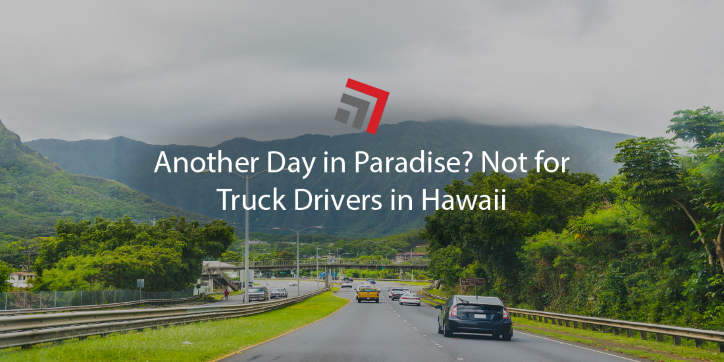When most people talk about Hawaii, they talk about how much of a paradise it is, or how much of a dream it is to visit/live there, etc., but for truck drivers in Hawaii, it’s the exact opposite. From a lack of loading docks and limited drivers to difficult road construction and narrow roads, the trucking industry in Hawaii has many windy roads when it comes to logistics.
Hawaii only has a few interstates, all on the island of Oahu. However, compared to the longest interstate in the U.S., which runs 3,020 miles from Seattle to Boston, Hawaii’s interstates are a breeze. According to the State of Hawaii Department of Transportation (HDOT), Hawaii’s State Highway System comprises about 981.2 centerline miles of highways and roads and provides transportation mobility for more than 1.4 million Hawaii residents and 8 million visitors each year, reported by Freightwaves. Over 32 million tons of freight is hauled via this road network annually, with the busiest of these roads seeing up to 20,000 trucks per day.
The HDOT has data that says the Truck Travel Time Reliability (TTTR) index, which is a metric designed to “measure how consistent or dependable travel times are for freight vehicles,” received only a 2.54 out of 5 possible points, which definitely could use some improvement. Driving in Hawaii, especially on their limited network of major highways, means driving even 5 miles at the wrong time of day in a passenger vehicle could take 30 minutes, according to Gareth Sakakida COO at the Hawaii Transportation Association (HTA).
However, truck drivers don’t always have the option to avoid rush hour. “There’s not many ways to reroute your drivers around a major accident, especially when it’s on the one major highway that runs east to west across the island, so that really starts to delay things,” said Kane McEwen, vice president of operations for Dependable Hawaiian Express (DHX), said of H-1, a major interstate on Oahu, reported by Freightwaves.
The extremely narrow, congested roads make it hard for trucking companies to navigate equipment any larger than a standard straight truck, McEwen stated. Most of the time it has to be broken up in multiple straight trucks or in smaller delivery vehicles, which impacts goods being so expensive in Hawaii.
One thing drivers have to look out for when driving in the Kaimuki area in Honolulu and Kailua area on the east side of the island is low-hanging power lines and having to make tough decisions on what size of container or vehicle will be able to realistically maneuver there, Joesph Vele, a Hawaiian truck driver and safety manager at DHX tells Freightwaves.
Finding qualified drivers in Hawaii is another issue at hand. DHX requires their truck drivers to have two years of over-the-road (OTR) experience, which is nearly impossible to get in Hawaii, says McEwen. That leaves drivers with an option to move and work in the U.S. Mainland for a couple of years to get that experience. However, there is an upside to working and living in Hawaii, it’s easy for drivers to make it home every night instead of spending days or weeks on the road. If you want to learn more about this or the current issue of retaining truck drivers, contact us today!



Recent Comments